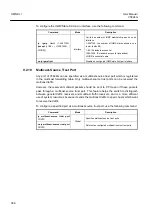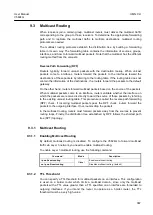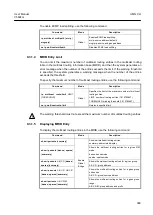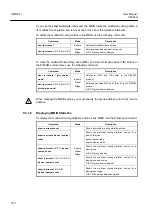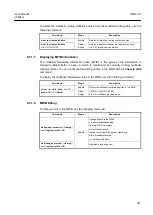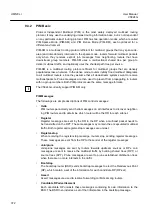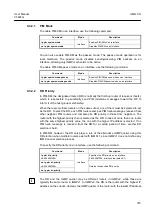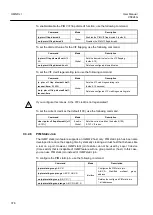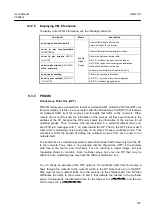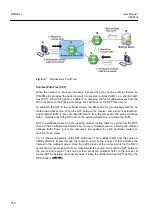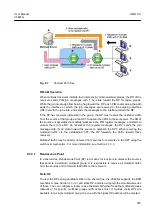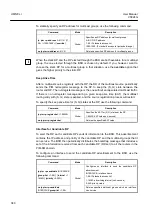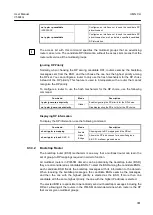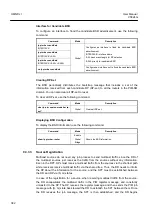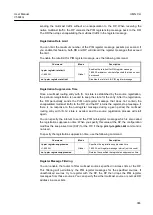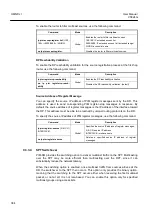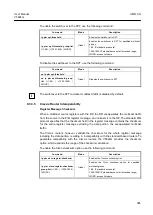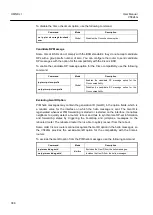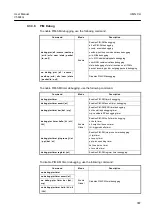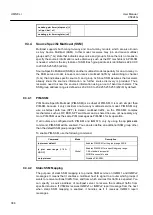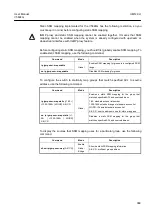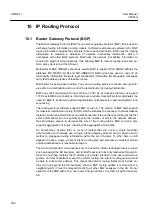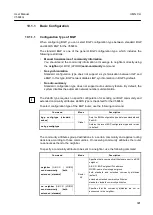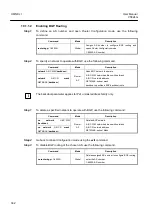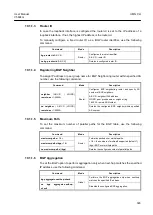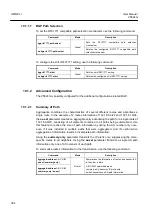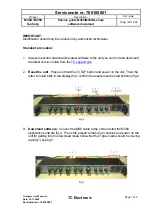
User Manual
UMN:CLI
V5824G
379
Fig. 9.7
Shortest Path Tree
PIM-SM Operation
When multicast receivers indicate their interests in certain multicast groups, the DR of the
receivers sends PIM join messages with (*, G) state toward the RP for those groups.
While the join messages flow hop-by-hop toward the RP, each PIM router along the path
adds the interface on which the join messages are received to the outgoing interface
(OIF) list with the join state, and sends the messages to the interface toward the RP.
If the RP has receivers interested in the group, the RP must receive the multicast traffic
from the source of that group via the SPT to deliver the traffic to those receiver. The DR of
the source encapsulates the multicast packets in the PIM register messages, and starts to
unicast them to the RP. On receipt of the register messages, the RP sends the join
message with (S, G) state toward the source to establish the SPT. When receiving the
multicast traffic via the established SPT, the RP forwards the traffic toward those
receivers.
Multicast traffic may be directly delivered from sources to receivers via the SPT using the
switchover mechanism. For more information, see Section
9.3.3.1
Rendezvous Point
In a shared tree, Rendezvous Point (RP) is a means for receivers to discover the sources
that send to a particular multicast group. It is responsible to receive all multicast traffic
from the sources and to forward that traffic to the receivers.
Static RP
To elect the RP among candidate RPs in the shared tree, the V5824G supports the BSR
mechanism (see Section
) and static RP, and also supports the simultaneous use
of those. You can configure a router to use the static RP either for all the multicast groups
(default) or for specific multicast groups (with access lists). If multiple static RPs are
available for a single multicast group, the one with the highest IP address will be elected.


